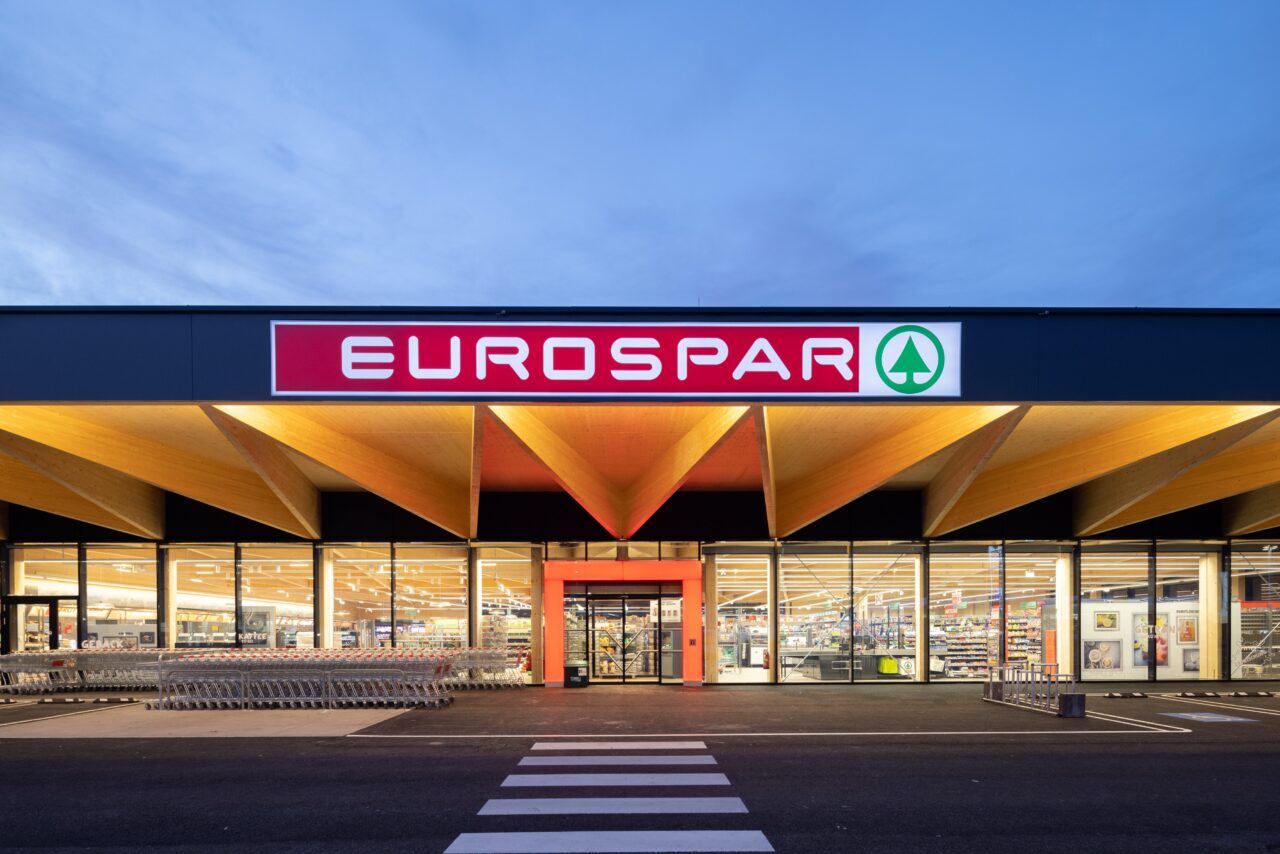Silver Winner of the International Architecture & Design Awards 2024
Eurospar Hönigsberg
Architecture
Commercial & Retail Architecture
Completed / Professional Category


Architect / Designer:
Viereck Architekten ZT-GmbH
Studio:
Viereck Architekten ZT-GmbH
Copyright:
Jorj Konstantinov
Country:
Austria
The new Eurospar Hönigsberg follows the street and opens up to incoming customers on two sides with generous glass surfaces. The main design feature is the striking diamond-shaped visible supporting structure made of glulam beams. This supporting structure grows out of the sales area, connects the inside and outside and creates a large floating canopy. The 8m deep canopy draws customers’ eyes and attention through its sloping geometry. A large covered, inviting forecourt is created underneath.
The building is constructed using a timber frame system with glulam beams and stiffening cross-laminated timber walls. All structural elements are visible and exposed and protrude from the shop space through the glass façade to the outside. This required visually appealing carpentry details and craftmanship. Therefore, the natural character of the timber building can be experienced from any angle.
Like the glass facade, the timber facade is divided into floor-to-ceiling vertical panels. In between, a diagonal sheet pile formwork made of oiled brushed thermo spruce is suspended. The alternating diagonal direction creates an unique facade appearance as you move around the building (light and dark). All the colors on the facade were deliberately kept dark to bring out the full effect of the striking natural timber structure.
The site itself proved to be a real challenge in terms of planning and execution: it is an old landfill site for building rubble, with an 8m drop in elevation to the river bank, which is located in the HQ100 flood zone; in addition, a high-pressure water pipe runs across the site to a gas pipe bridge over the river. The entire slope was stabilized with impulse compaction. The building structure stands on a monolithic reinforced concrete slab, with well foundations protruding 9m into the ground. The terrain along the river was backfilled and the high embankment was constructed with reinforced soil, which is covered in greenery. The jump in the terrain was used to create a basement with staff rooms and a private terrace. A new walking path to the river was built as well.
